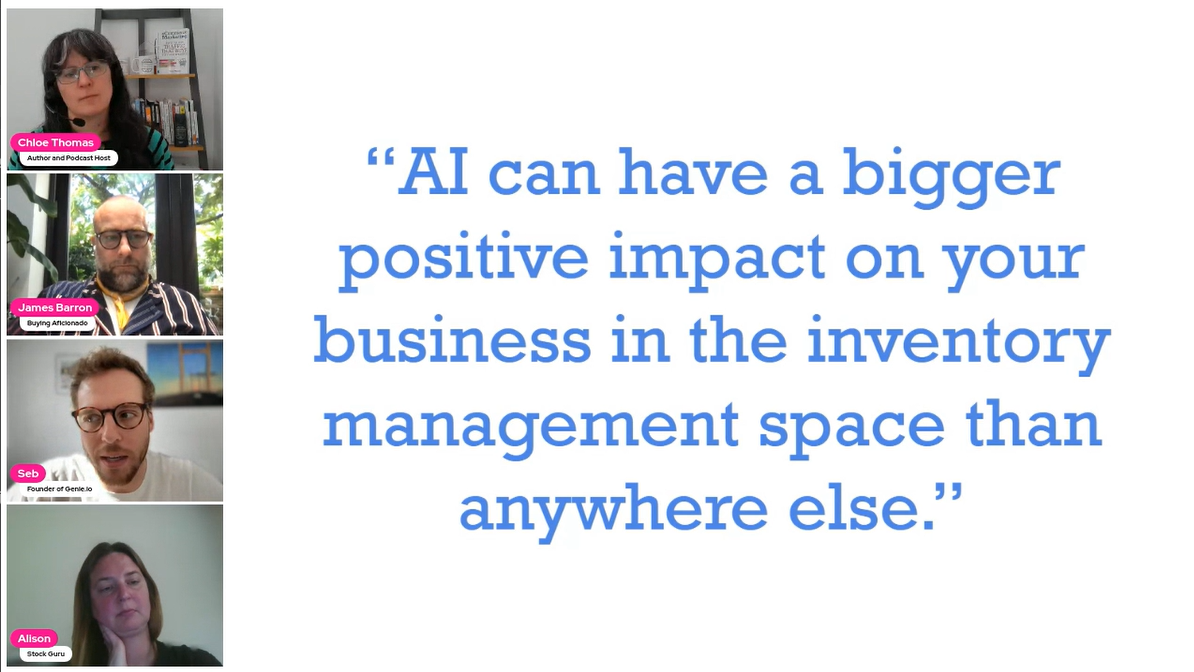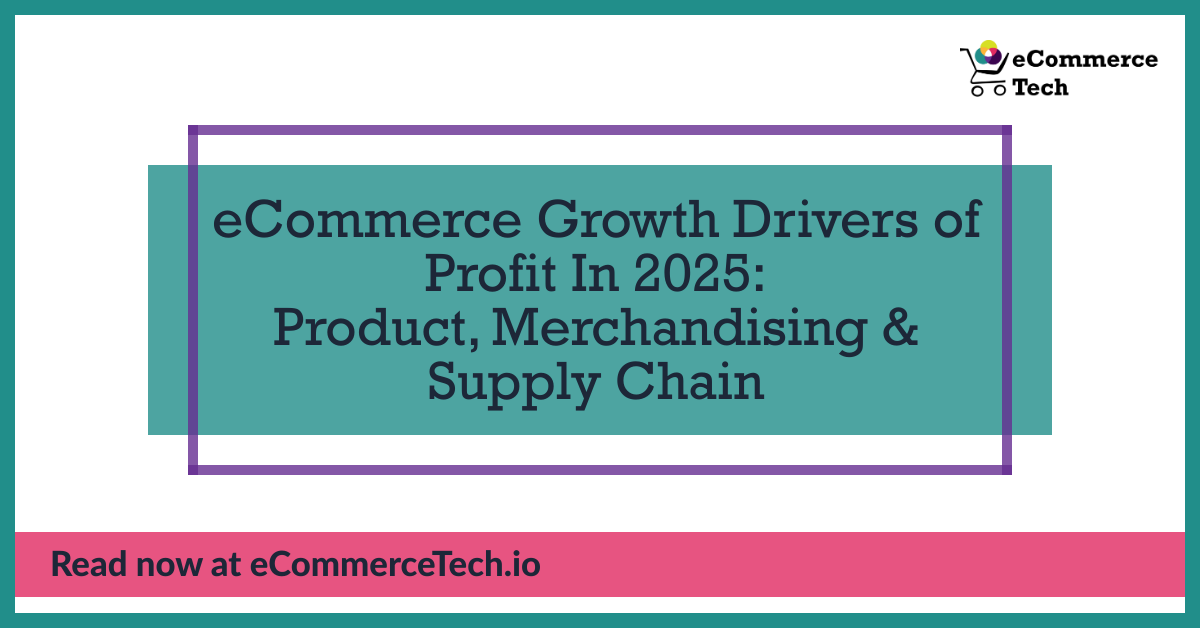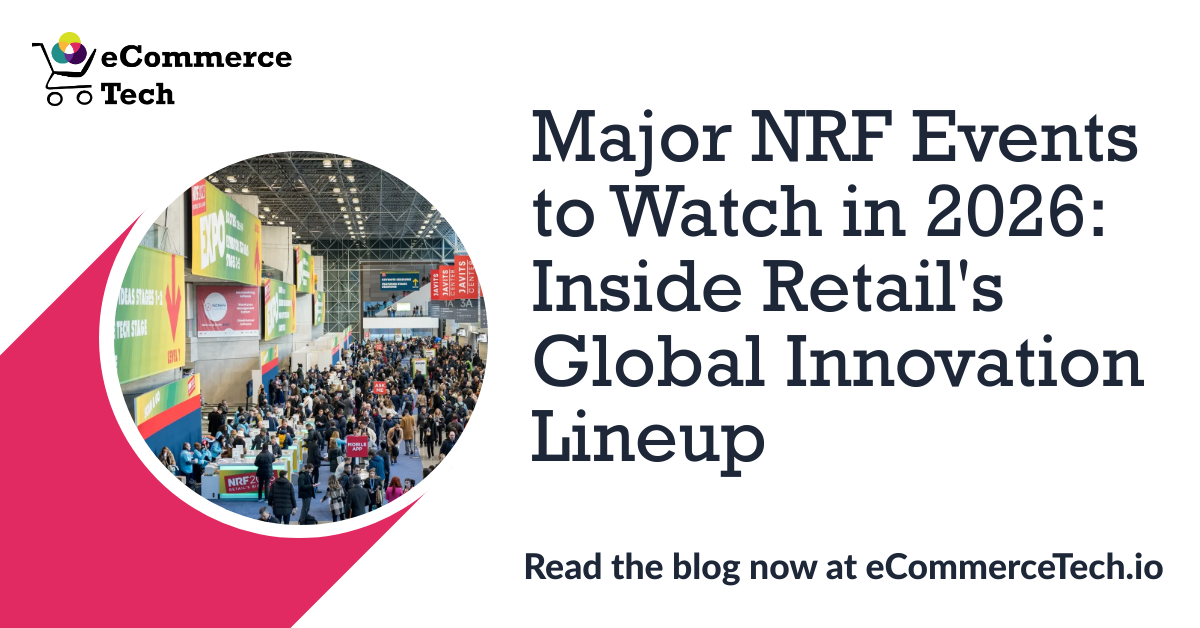For years, eCommerce growth has been driven by better ads, smoother checkout flows, and more clever marketing automation. But what if the real opportunity for growth lives behind the scenes in your inventory planning, product strategy, and supplier relationships?
That was the big idea behind our latest eCommerce Explored webinar, hosted by Chloe Thomas, who brought together three experts with decades of experience in buying, merchandising, and product tech to unpack what’s working now and what’s not. Together, they explored how smarter product decisions (made months before the customer ever lands on your PDP) are the true drivers of profit in 2025.
Their message was clear: optimising a product is just as important, if not more so, than optimising your website or ads. In a more competitive, cost-conscious market, your real edge comes from what you sell, when you sell it, and how well your internal teams align to make it happen.
Meet the Experts
James Barron (ex-ASOS) — With 20+ years in retail buying and brand partnerships, James brings hard-won insight from his time leading buying at ASOS and working with over 400 global brands.
Alison Metcalfe (ex-John Lewis) — Former Head of Merchandising at John Lewis, Alison now advises smaller retailers on how to clean up their data, understand their stock, and plan smarter.
Sebastiaan Debrouwere (Genie) — Founder of Genie, a platform helping fast-growing eCommerce brands bring sales and inventory data together to make faster, better product decisions.

Why Product Optimisation Now?
We’ve all heard it before: Product is king. But what does that mean today, when attention spans are short and margins are tighter?
Sebastiaan framed the shift clearly: “Cracking the marketing was a really important part… particularly because it was quite cheap for a certain time to get eyeballs, to get customers. And so sometimes you could get away with the bad catalog or with bad products.” That’s no longer the case. With rising acquisition costs and sharper customer expectations, he warned, “Whatever your baseline is, is probably too low.”
James agreed, pointing out that product optimisation “starts right at the beginning of the buying cycle. So probably a year before the product even lands on the website or into store.”
The key takeaway? Optimising a product once it’s already live on your site means you’re already reacting to a problem. The real leverage point is earlier, months before launch.
Know What You Have—Before You Forecast What You Need
Forecasting and buying decisions can only be smart if they’re grounded in good data. However, most brands lack that foundation.
Sebastiaan offered a simple starting point: “Getting a really good understanding of which products are selling when, how profitable are they, how quickly do they shift, and how many of them do you hold is like the Holy Grail of any optimisation.” He’s not talking about fancy tools—just basic ABC analysis to understand what’s working and what’s not.
Alison backed that up: “I first of all actually start with cleaning the data... because like Sebastiaan says, any retailer... has probably grown and their data that used to be how they categorised it in the past isn’t necessarily how they categorise it now.”
That echoes a theme we’ve touched on in our data cleanup for scaling the eCommerce blog. It’s not just about reporting, it’s about enabling better decisions across every level of your team.
Product Planning Starts With the Customer—but Not Always the Way You Think
Of course, every buying decision is made with the customer in mind. But who that customer is and how deeply you understand them has changed.
James explained how the segmentation process at ASOS evolved: “Nowadays, for someone like ASOS, they may have seven or eight different customer types or segments… How do they dress when they go to the airport? How do they dress when they go to the gym?” The granularity matters because it shapes how you plan your range.
But not every product decision comes from what customers say. As James noted: “Sometimes the customer doesn’t know what they want to receive… Customers want to be surprised.”
Alison added that today’s community engagement (via social channels and direct feedback loops) replaces what physical store feedback used to offer. “The whole retail dynamics hasn’t changed per se. It’s just how you interact with them… that’s what’s changed.”

Use Tech as a Copilot, Not a Blindfold
Discussions about automation, algorithms, and “AI” are prevalent in eCommerce, but the panel cautioned against placing blind trust in technology.
Sebastiaan was clear: “I’m not an advocate of the black box, set and forget approach to merchandising and control planning.” Instead, he argued, tools should make it easier to see key signals across supply chain, product, finance, and marketing so real humans can make informed decisions.
Alison agreed: “I was told quite early on in my career that I’d be replaced by a computer. I haven’t yet, and I don’t think I will.”
The real risk isn’t technology replacing humans; it’s technology limiting them. As Alison warned, “Shopify is terrible for exporting data out… BigCommerce can’t get anything out of it… You can’t manipulate.” When you can’t access your data, you can’t diagnose problems. And if your systems lock you in, you’re building strategy on hope, not insight
Your Supply Chain Is a Profit Lever—Use It
One of the most overlooked levers in eCommerce profitability? Supplier collaboration.
Sebastiaan flagged this early on: “In practice, everyone falls back on spreadsheets and PDFs and WhatsApp messages that are often linked to significant amounts of value for your company.”
James made the case even clearer: “One of the biggest problems for suppliers is I haven’t got the order yet, but it’s due in six weeks… if you don’t get the order quickly, you don’t get the trim, you don’t get the care label… and you start to create problems.”
Getting the product right is just one piece of the puzzle. Getting it ready on time, as expected, is just as important. And yet, many brands underinvest in tools and processes that streamline purchase orders, track in-transit stock, and flag supplier issues early.
Final Thoughts
So much of eCommerce optimisation in 2025 still focuses on what happens after someone lands on your site. But this webinar was a powerful reminder that the real work that makes or breaks your business often occurs long before the customer sees the product.
James summed it up perfectly: “Product remains king. Invest in product… best products have the lowest relays markdown, best products have the least returns.”
Alison reminded us that behind every missed inventory target or delayed launch is a customer disappointment: “If your problem is not keeping up in stock, that’s your customer’s problem.”
And Sebastiaan closed with timeless advice: “If you are solution-led in this case, you’ll probably end up with a mishmash of solutions that don’t really work… Start from the problems you see today in your business.”
Watch the full webinar replay here, or sign up for future sessions in our eCommerce Explored series. You can also explore our Product Tech Directory to find tools to improve your buying, merchandising, and supply chain strategies.





